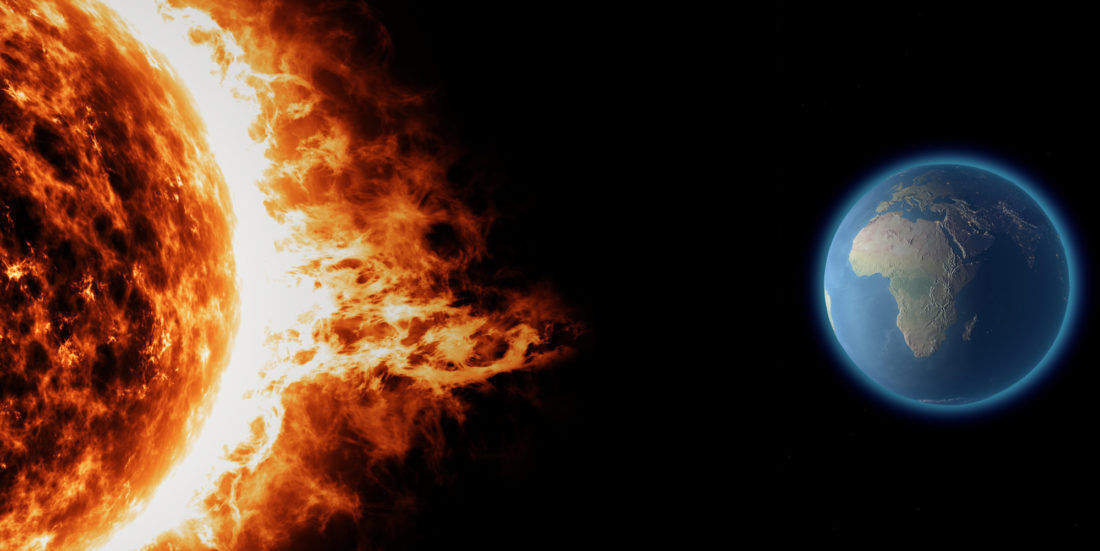Getting to know more about sun storms
A violent solar eruption can disrupt the Earth’s magnetic field, which in turn can interfere with power grids. In Washington, the White House is making contingency plans – as is the electrical power sector in Norway.
One particular feature of sun storms which makes it important to be prepared is that they impact on large geographical areas at one and the same time. In 1989, a major sun storm disabled the power system in Quebec in Canada, and in 2003 power cuts caused by a sun storm resulted in major economic consequences across the north-western USA. In our society in particular, which is so dependent on technology and infrastructure, sun storms have the potential to make a major negative impact.
SINTEF and NTNU are now planning to look into the effects of sun storms on electricity distribution in Norway for Statnett, Statkraft and the Norwegian Water Resources and Energy Directorate (NVE).
“Sun storms can cause stability problems resulting in power outages”, says energy research scientist and Project Manager Atle Pedersen at SINTEF. “If the worst comes to the worst, they can also cause permanent damage to equipment such as transformers, which in turn may lead to prolonged power cuts”, he says.
Studies since the 1990s
“I suppose we’re really waiting for something ‘big’ to happen”, says Statnett’s Trond Magne Ohnstad, who has been studying sun storms since the late 1990s. “Even then I wanted to find out whether sun storms represented a real threat to power supplies”, he says.
In the beginning, Ohnstad studied internationally-authored articles and reports, and in 1999 Statnett installed measuring equipment on a transformer and recorded the geomagnetically-induced current (GIC) that arises following sun storms. Since 2003, measurements have been carried out at many other locations.
“I want to bring together a larger group of experts to study this topic here in Norway”, says Ohnstad. “This is why we’ve launched a preliminary study to look into sun storms”, he says.
The reason for this is that Statnett is currently making historic increases in investment in the power grid. At present, the Norwegian domestic power system is not particularly vulnerable to sun storms but, according to Statnett, it is vital to maintain skills and expertise levels in this field in order to ensure that supplies continue to remain stable.
Preparing for extreme space weather
In October 2015 the White House presented a strategy designed to prepare itself against extreme sun storms (article in Norwegian).
Here in Norway, the NVE is doing the same.
“In recent years there has been an increasing focus on potential problems and damage associated with sun storms”, says Senior Engineer Helge Ulsberg at the NVE. “And the NVE has been playing an active part”, he says.
In its regulations governing preventive security and emergency preparedness linked to energy supplies, published in 2013, the NVE highlights two types of incident caused by sun storms requiring contingency measures. The first involves avoiding the disruption of GPS signals, and the second the protection of transformers from damage.
As well prepared as possible
Energy researchers at SINTEF and NTNU have extensive experience in solving similar problems linked to the power system. And now they’re going to assess the risks associated with sun storms, and come up with the most essential and cost-effective preventive measures.
“What is the best way to prepare when a sun storm is forecast?” asks Atle Pedersen. “We will use the project to find out”, he concludes.
The preliminary project is being funded by Statnett, Statkraft and the NVE. SINTEF Energy Research is heading the project, with NTNU as its research partner.
How sun storms can disrupt the power distribution grid?
Olve Moe, research scientist at SINTEF Energy Research explains:
A sun storm is capable of sending a jet stream of electrically-charged particles towards the Earth at very high velocities.
In practice, a single jet of charged particles represents a variable electrical current. Such a current will induce currents in conducting materials in its vicinity, in a similar way to an induction furnace. We observe the same effect when a powerful jet stream of charged particles originating from a sun storm sweeps across the Earth. The jet stream induces currents in metal constructions and other conductors.
This means that power lines are particularly vulnerable, partly because of their widespread extent and partly because they are electrically insulated from earth.
During any given sun storm, the size of the current of charged particles from the sun will vary. Several minutes may pass between each peak current event. The currents induced in the power lines by this phenomenon will vary at the same frequency as the variation in the current of charged particles.
For this reason, the current induced in the power lines by the sun storm will exhibit much slower variation (lower frequency) than the normal frequency transmitted by the grid (in Norway the grid carries 50Hz with a repeated peak value 50 times per second).
Because of this we often say that sun storms induce direct currents in the power lines, even though it is in fact a slowly varying and irregular alternating current.
The direct current is the core of the problem. Transformers, which are key components of the power distribution grid, are very sensitive to direct and slowly varying currents, and can be damaged in such situations. Direct currents can also cause indirect problems for transformers such as functional instability and the inadvertent disconnection of fuses leading to power cuts across large geographical areas.




